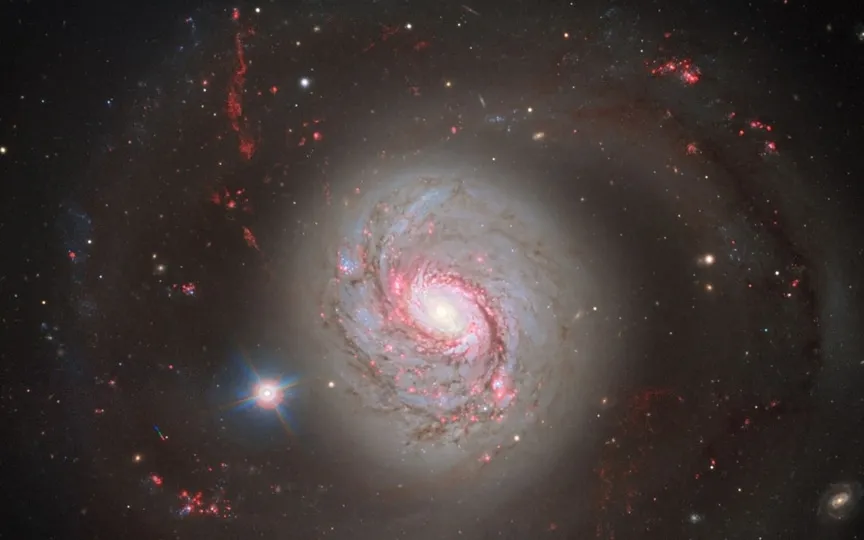Unprecedented Discovery! ALMA Telescope Spots First-Ever Planet-Forming Disk Beyond the Milky Way!
Astronomers have made a groundbreaking discovery by spotting a swirling disk of material, similar to those found around young stars in our Milky Way Galaxy, feeding a young star in the Large Magellanic Cloud, a nearby galaxy located 160,000 light-years away. Using the Atacama Large Millimeter/submillimeter Array (ALMA), a massive Earth-based astronomical project with 66 antennas in Northern Chile, a team of researchers led by Anna McLeod from Durham University observed the system known as HH 1177 within a huge gas cloud. This is the first confirmed detection of an extragalactic accretion disk.
First glimpse of an extragalactic breeding disk
“When I first saw evidence of rotating structure in the ALMA data, I couldn’t believe that we had detected the first extragalactic accretion disk. It was a special moment,” McLeod said. “We know that discs are vital to the formation of stars and planets in our galaxy, and now for the first time we see direct evidence of this in another galaxy,” Space.com reported.
The original lead to this discovery came from the Multi Unit Spectroscopic Explorer (MUSE) instrument on ESO’s Very Large Telescope (VLT), which detected a jet from a star forming in HH 1177. The MUSE instrument works in the visible wavelength range, which enables observations and measurements of light wavelengths to identify different substances.
“We found a jet that was launched from this young massive star, and its presence is a sign of ongoing disc accretion,” McLeod added. To verify the existence of an accretion disk, the researchers measured the movement of dense gas around the star.
Accretion disks like the one observed in HH 1177 form when matter descends toward a young star or other accreted object, such as a black hole or neutron star. As the material falls onto these objects, it forms a flat, rotating disk that gradually feeds matter into the central object.
In an era of rapid technological development of astronomical facilities, this discovery offers an exciting opportunity to study star formation at incredible distances and in a different galaxy. The findings are detailed in the paper “Probable Keplerian disk feeding optically exposed massive young star” published in the journal Nature.




